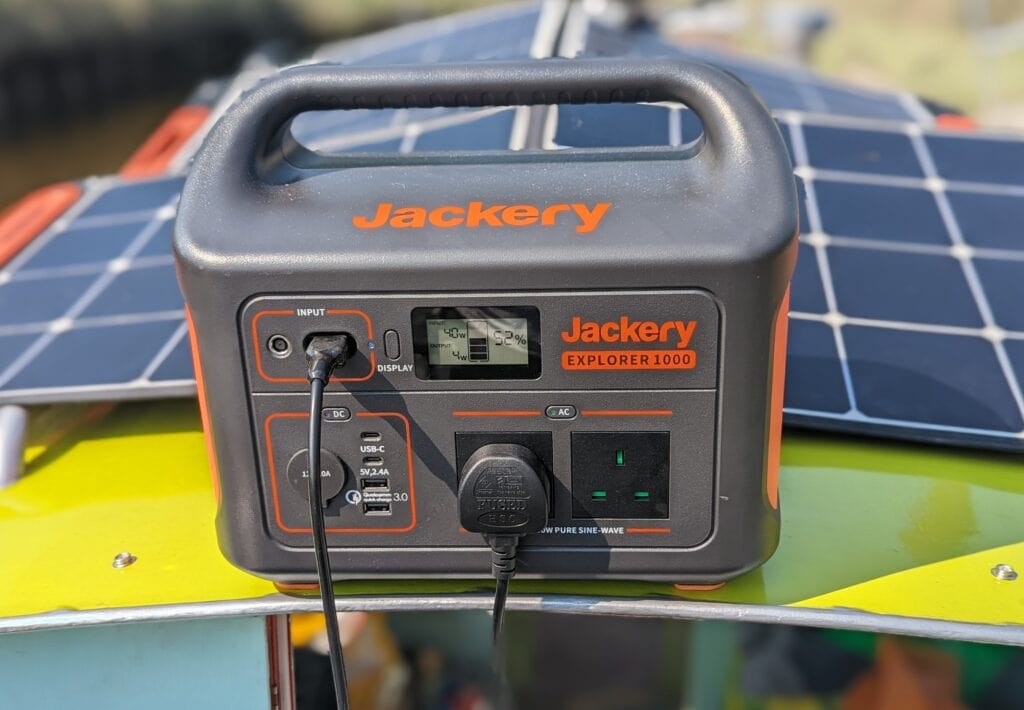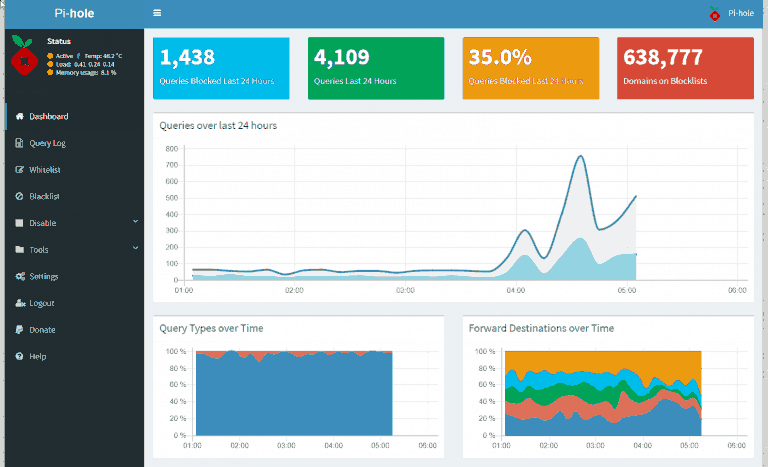Any links to online stores should be assumed to be affiliates. The company or PR agency provides all or most review samples. They have no control over my content, and I provide my honest opinion.
I have previously reviewed the superb Jackery Solar Generator 500, and I have recently been checking out its bigger brother, the Jackery Solar Generator 1000.
The Solar Generator 1000 is the flagship product from Jackery in the UK and is intended for people that have demanding off-grid requirements. For US buyers, Jackery has options going up to the Jackery Solar Generator 2000 Pro, which can handle up to 6x200W solar panels!
| Preview | Product | Rating | Price | |
|---|---|---|---|---|

| Jackery Explorer 1000 v2+ 100W Solar Panel Portable Power... | Buy on Amazon |
Jackery UK Discount Code
- Code: MG10
- Apply to: Jackery Solar Generator 1000 / Jackery Explorer 1000 / Jackery SolarSaga 100
- Discount: 10% OFF
- Date: 23-29 Sept
- Available at: https://uk.jackery.com
Jackery Solar Generator
Jackery is keen to point out that Jackery Solar Generator is one unique product rather than two separate products. However, for the sake of clarity, this product is a package of two products consisting of:
- Jackery Solar Generator 1000 (RRP £1,637.99)
- Explorer 1000 (RRP £1,154.99)
- 2 x SolarSaga 100W (RRP £272.99 per panel)
- Jackery Solar Generator 500 (RRP of £787.99)
- Explorer 500 (RRP £556.99 )
- 1 x SolarSaga 100W (RRP £272.99)
Looking at the RRP of the individual products, you have a small saving of around £70 if you buy the Jackery Solar Generator 1000 as one product.
For the Solar Generator 500, the saving is approximately £42.
Specification
- Battery Information:
- Capacity: 1002Wh (21.6V, 46.4Ah)
- Cell Chemistry: Li-ion NMC
- Lifecycle: 500 cycles to 80%+ capacity
- Management System: BMS, Over Voltage Protection, Short Circuit Protection
- Ports:
- AC Output: 230V, 1000W (2000W Surge)
- USB-A Output: 5V, 2.4A
- Quick Charge 3.0 Output: 5-6.5V, 3A / 6.5-9V, 3A / 9-12V, 1.5A
- USB-C Output: 5V, 9V, 12V up to 3A
- Car Output: 12V, 10A
- DC Input: 12V-30V (200W Max)
- Recharge Times:
- AC Adapter: 7.5 Hours
- 12V Car Adaptor: 14 Hours
- Two SolarSaga 100W Solar Panels: 8 Hours
- Physical Properties:
- Weight: 22.04 lbs (10 kg)
- Dimensions (LxWxD): 13.1 x 9.2 x 11.1 in (33.3 x 23.3 x 28.3 cm)
- Operating Usage Temperature: 14-104F (-10-40℃)
Jackery Solar Generator 1000 vs Jackery Solar Generator 500

The Jackery Solar Generator 1000 is much the same as the Solar Generator 500, just more of it.
As the name suggests, it is about double the capacity with 1002Wh vs 518Wh, but it is also double the output power with 1000W (2000W Surge) vs 500W (1000W Surge).
The USB port configuration has changed from 3xUSB-A with an output of 5V, 2.4A to now having two USB-C ports with 36W output and then 2xUSB-A with an output of 5V, 2.4A.
You now also have two UK plug sockets.
The Solar Generator 500 had just one DC input that was used either for mains or solar, but the Solar Generator 1000 has a second Anderson port which is used when you have two solar panels running.
Of course, the bigger battery means a significant size difference. The Generator 1000 weighs in at 10 kg vs 6.04kg and measures 33.3 x 23.3 x 28.3 cm vs 30.1 x 19.3 x 24.2 cm.
Finally, the Jackery Solar Generator 1000 consists of two 100W solar panels, whereas the Jackery Solar Generator 500 only has one and is only compatible with one.
Solar Charging
The Jackery Solar Generator 1000 comes with two 100W solar panels, and these are connected with a Y splitter which then plugs into the anderson port of the Solar Generator. The smaller Solar Generator 500 lacks this port and is therefore not compatible with multiple solar panels.
I reviewed the Jackery Solar Generator 500 in October 2021, and I live up north. It was, therefore, not the optimal condition for solar charging. I was lucky to get a few sunny days, and locating the panel on my garage roof, I was able to achieve a peak charge rate of 60W, which I thought was quite good considering the conditions.
This review was done in August, and I got lucky with a solid week of sunny weather.
I tested the solar panels in a variety of scenarios. The first day was with just one panel and first thing in the morning. It was sunny, but I had low expectations, and it ended up performing much better than expected.

Using a single panel, just like my last review, I had to place this on my garage roof for the best exposure to the sun. At 8 am, I was able to get an input of 44W, by 10:50 am, the input had increased to 80W. During this time, the battery went from 46% to 58%. Later in the day, I managed to see 82W, and I think 80-90W may be the peak I am likely to see in most scenarios.
Using the panels running in conjunction with each other, I was able to hit a peak of around 135W. A bit less than expected, and the charge rate didn’t seem to increase in a linear manner when doubling the panels. I suspect this is mostly due to the placement. It is also worth noting that the Jackery seems to pull around 145W from the wall. Therefore on a sunny day, you can charge this at about the same speed from solar as you would from plugging it into the mains.
If for some reason, you don’t have access to the power station but do have the solar panel, you can plug the panel directly into any USB device, such as a power bank or phone.
During my research into pricing and looking at other products, I noticed that the Jackery solar panels cost a lot more than the random brands. Out of curiosity, I ordered the Mobisolar and Oystade100W portable solar panels, both of which are around £100 cheaper than Jackery. However, neither of them performed well, typically 25% below the performance of Jackery, achieving 60W instead of 80W in the mid-day sun. So, even though the Jackery panels cost a lot more, I wouldn’t regard them as poor value for money.
Features / In-Use
All the units Jackery produce use a Li-ion NMC (nickel manganese cobalt), and it looks like these are all rated for 500 cycles before the capacity is reduced to 80%. Some brands, such as Anker, have shifted to Lithium Iron Phosphate (LiFePO4), which has a significantly longer lifespan but the battery itself is physically much larger. Looking at the Anker 757 vs Jackery Explorer 1500, it weights 28% more but has 20% less capacity. However, Anker claims a longevity of 3,000 battery cycles.
The Explorer 1000 portable power station addresses one of my main criticisms of the smaller Explorer 500; it has two USB-C ports that support Qualcomm Quick Charge 3.0, which goes up to 36W. It is not the fastest charging possible, I would have liked to see 100W power delivery, which would allow me to charge my Honor MagicBook 15 laptop directly, but it is good enough.
Of course, you can easily plug in a power delivery-capable USB charger. Thanks to the two UK plug sockets that is now much more convenient.
I was also able to test the unit in a real-world setting. I spent a couple of days on my mothers’ canal boat as we crossed the Ribble Link and went down to Burscough.
I didn’t have any very demanding applications, but I had an Alpicool K25 25 Liter Portable Car Fridge Freezer (affiliate link) to keep my beer cold, my laptop for work, various phones and a Bluetooth speaker.
At home, for a more synthetic test, I used the Explorer 1000 (without the solar panels) to keep an under-the-counter fridge going for 24 hours. It started out with 100% battery, and when I returned the next day, it was at 46%.
Foolishly, I didn’t check the continuous power rating or the power requirements of an air fryer, and when testing this, I think I saw a peak power of 1600W before the Jackery shutdown. It is rated at 2000W surge protection, so at the very least, it was good to see that this works.
Price and Availability
| Preview | Product | Rating | Price | |
|---|---|---|---|---|

| Jackery Explorer 1000 v2+ 100W Solar Panel Portable Power... | Buy on Amazon | ||

| Jackery Solar Generator 500, 518WH Power Station with... | £379.00 | Buy on Amazon |
As highlighted at the start of the review, it is priced at £1,637.99 on the Jackery website, and this consists of the two separate parts, working out a bit cheaper than buying them separately.
Jackery also sells this on Amazon; as I write my initial draft, this has been reduced down to £1,392.29, which is the lowest price it has ever been on Amazon.
Overall
The Jackery Solar Generator 1000 is undeniably an outstanding bit of kit and will no doubt be on the wishlist of anyone that spends a lot of time off-grid, such as either camping, in motor homes, or in my case, on a canal boat.
It is very expensive, which is a big hurdle to overcome. For the occasional camper, it may be a bit too much, but taking my mother as an example, who spends all summer on the boat, it will likely end up looking like good value for money based on cost per use. In particular, during the summer, the two solar panels will likely make her self-sufficient for most of the electrical appliances on her boat.
Jackery Solar Generator 1000 Review Rating
Summary
The Jackery Solar Generator 1000 is undeniably an outstanding bit of kit and will no doubt be on the wishlist of anyone that spends a lot of time off-grid, such as either camping, in motor homes, or in my case, on a canal boat.
Overall
90%-
Overall - 90%90%
Pros
- Use capacity and 1000W rated output for continuous use
- 2x 100W solar panels could potentially make you self-sufficient (for light usage)
Cons
- Not cheap
- USB-C only does QC 3.0 @ 36W
I am James, a UK-based tech enthusiast and the Editor and Owner of Mighty Gadget, which I’ve proudly run since 2007. Passionate about all things technology, my expertise spans from computers and networking to mobile, wearables, and smart home devices.
As a fitness fanatic who loves running and cycling, I also have a keen interest in fitness-related technology, and I take every opportunity to cover this niche on my blog. My diverse interests allow me to bring a unique perspective to tech blogging, merging lifestyle, fitness, and the latest tech trends.
In my academic pursuits, I earned a BSc in Information Systems Design from UCLAN, before advancing my learning with a Master’s Degree in Computing. This advanced study also included Cisco CCNA accreditation, further demonstrating my commitment to understanding and staying ahead of the technology curve.
I’m proud to share that Vuelio has consistently ranked Mighty Gadget as one of the top technology blogs in the UK. With my dedication to technology and drive to share my insights, I aim to continue providing my readers with engaging and informative content.
Last update on 2025-07-18 / Affiliate links / Images from Amazon Product Advertising API








very clear and good article easy to understand. Thank you